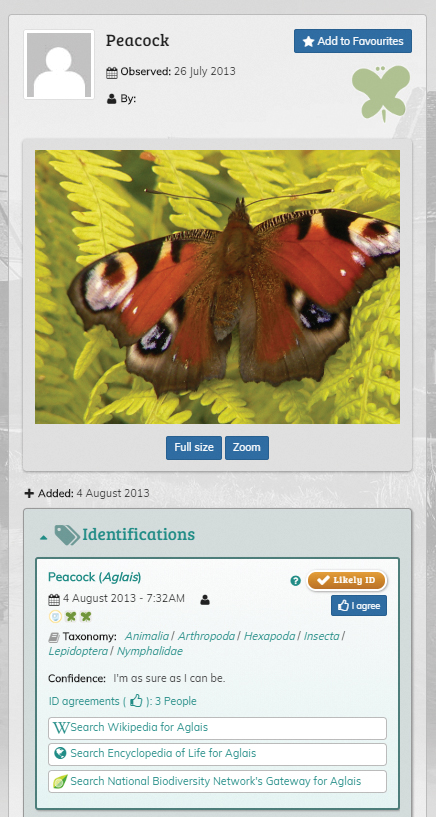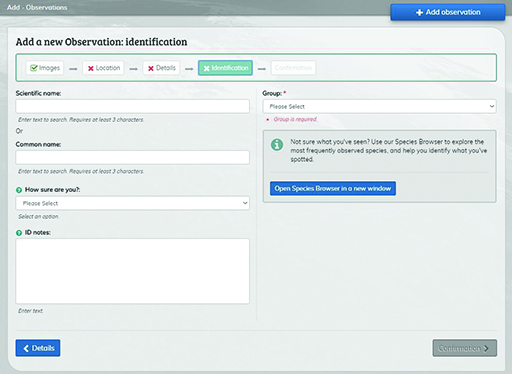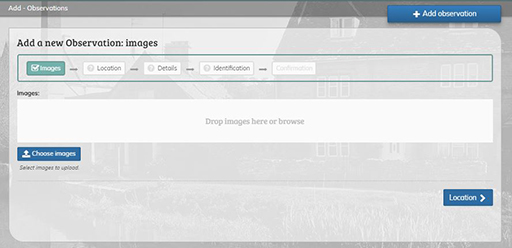6.4 Using the taxonomic hierarchy (‘tree of life’)
On iSpot, scientific and common names are checked automatically against the UK species dictionary for UK species and the Catalogue of Life for others. Valid names provide links to species maps on the National Biodiversity Network (NBN) Atlas (for the UK and Ireland only), Wikipedia and the Encyclopedia of Life. (These sites were explored in Week 6.)
As soon as a species name is attached to your observation, you should see a taxonomy list under its photo that will allow you to browse up or down the taxonomic tree. For example, looking at the peacock butterfly [Tip: hold Ctrl and click a link to open it in a new tab. (Hide tip)] you found via the Species Browser earlier (Figure 17), the scientific name is Aglais. If you remember, you used the taxonomy links in the Species Browser to move up through the hierarchy. From here, you can see if there are other species in the family Nymphalidae, look at all the members of the genus Aglais, and so on.

The taxonomy links also appear if you click on any of the species names in the identifications on iSpot. These are live links to a species dictionary page that includes the taxonomic tree (shown as a series of links towards the top of the page) as well as any ecological links that have been made with other species (towards the bottom of the page).
To make all of these links work, make sure that, when typing in an English or a scientific species name, you always pick a name off the drop-down list, if you can. And remember to click on the ‘Get recommended’ button, to check that it is the name recommended by the UK Species Inventory (in iSpot’s ‘UK and Ireland’ community) or by the Species 2000 & ITIS Catalogue of Life: Annual Checklist (in the other communities).
Adding species names with help from the species dictionary
When you add an identification and start to type in a species name on iSpot, you should see a drop-down list appear that will provide names that match the one you’re typing in as closely as possible. iSpot works best if you can choose a name from the list whenever possible (although if you need to use a name that isn’t in the list then you have the option of just typing it in).
Find more information about iSpot’s use of species dictionaries.
Why is this important?


When adding an observation, filling in as much information about the species as you can is very important, including the species group, common or scientific name. Using a name selected from the drop-down list gives iSpot the best chance of linking correctly to other information about the species on both iSpot itself and the external sites that it links to. You can click and open the Species Browser if you would like to look for other examples within a particular species group or sub-group. If you are not sure, just say so from the drop-down menu provided. If you want to revise the information provided after you have posted the observation, you can. Go to it and click the ‘Add a revised identification’ button.
Within iSpot, the use of a recommended name allows your species observation to be linked in to the taxonomic hierarchy feature, so that you can see how your observation fits in to the scientific classification of species and which other species are most closely related.
It also means that the observations on iSpot can be passed on to the recording schemes (such as those badged on iSpot) that collate species records. The site can send the record to the correct recording scheme only if it has been identified with a name that links to a species dictionary.
